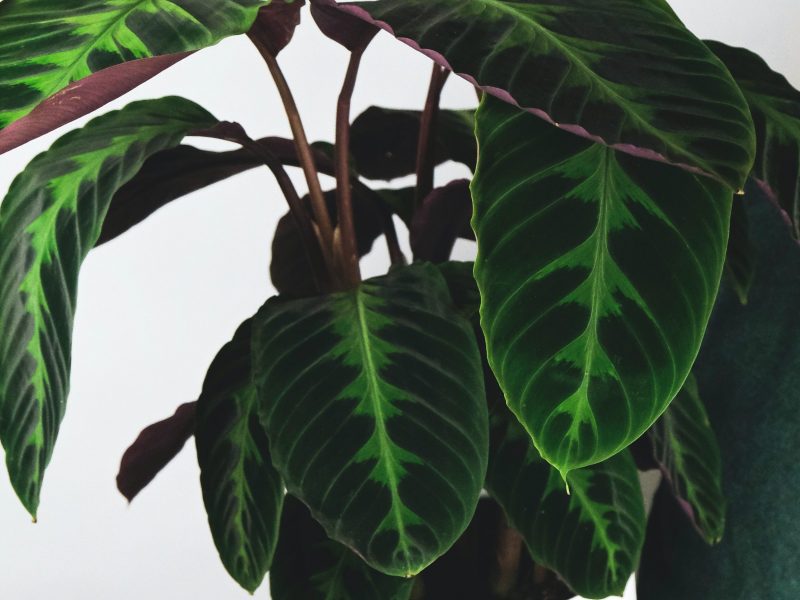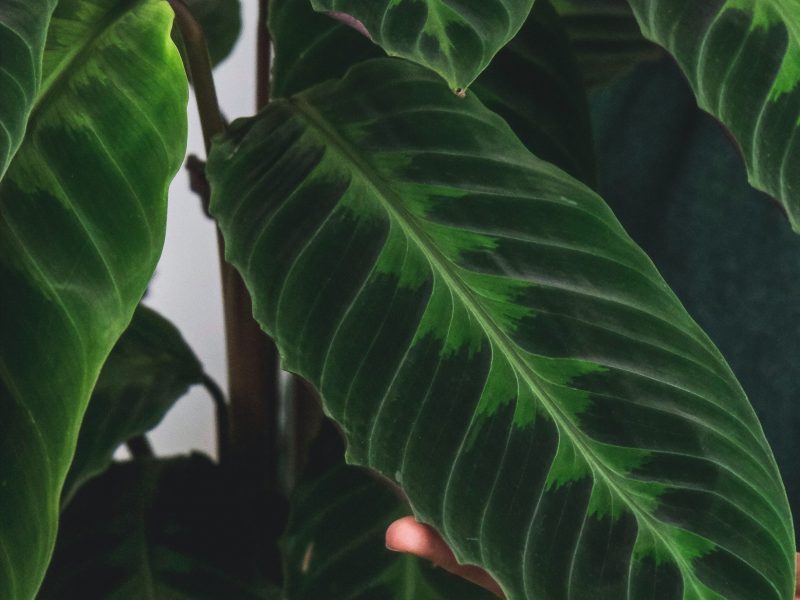
Basic Calathea Jungle Velvet Care
Part of the Prayer Plant family, these incredible plants really bring something special! However, they can be quite difficult to care for as their natural environment of the rainforest is worlds away from our homes. We hope this Calathea Jungle Velvet care guide will give you everything you need to know to keep your plant happy.
| Light |
Medium LightI prefer areas that aren’t too bright or shady. Finding a balance is important. |
| Water |
Water FrequentlyI like my soil to be moist so make sure to water me often. |
| Humidity |
High HumidityI thrive in humid environments so please mist my leaves every so often. |
| Soil |
Potting SoilI need soil specifically for indoor plants as it retains the right amount of water. |
Avoid all direct sunlight
Calathea Jungle Velvet plants thrive in medium to bright indirect light. You want to keep them away from direct sunlight (especially throughout the summer) as the intense light can scorch the leaves.
Watering can be a little tricky
Calathea Jungle Velvets need moist soil. They don’t like it to be soggy or dry which can make watering a little bit of a fuss. We recommend using a water meter so you can be sure when it’s time to water your Calathea as you can’t rely on leaf movements due to their natural daily praying.
Calathea Jungle Velvet plants love warm temperatures
Warm temperatures are a must when it comes to caring for a Calathea Jungle Velvet. They are native to tropical areas so are used to warm environments. Keep your Calathea far away from any drafty doors or windows as the cooler air from outside will be enough to kill your plant over time.
Keep humidity levels high
One of the most important factors to focus on when caring for a Calathea Jungle Velvet is humidity. They need high humidity to thrive so we recommend misting the leaves several times each week as well as using a humidifier, pebble tray or showering to boost levels further.
Fertilise very little
When it comes to feeding your Calathea Jungle Velvet, you want to be very light with it. Feed once every other month during the growth season and not at all during winter. If you prefer, you can also hold off on any fertiliser and you will still see luscious growth.
Propagate your Calathea Jungle Velvet by division
The most successful way of propagating a Calathea Jungle Velvet is by division of the mother plant. Make sure that you do this in spring though as these plants don’t like having their roots disturbed so it can be quite damaging to do it over winter where recovery will take longer.
The Calathea Jungle Velvet is safe for pets
If you have small children or pets who like to nibble on the leaves of your houseplants then you the Calathea Jungle Velvet is the perfect plant for you as it is totally safe and non-toxic.

Common Problems with your Calathea Jungle Velvet
Here are some common issues that you might run into. It's important to diagnose any issues early to give your plant the best chance of bouncing back.
Why does my Calathea Jungle Velvet have yellow leaves?
The most common cause of yellow leaves on a Calathea Warscewiczi is overwatering. Check the moisture levels in the soil to see if it is waterlogged and replace if necessary. Going forward cut back on how much water you are giving your Calathea and check the soil has dried out a little before watering again.
If watering levels seem normal, direct light, pests and fertiliser burn can also cause yellow leaves so give your plant a once over to see signs of these.
Why are my Calathea Jungle Velvet's leaves curling?
First, you want to make sure the curling leaves are not part of the daily prayer dance that Calatheas naturally do so monitor any movement for a few days. If they are not uncurling then low temperatures, underwatering or a lack of humidity are the main causes. Check your plant’s environment using a humidity and temperature monitor and go from there.














